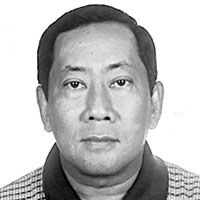Remembering a maritime disaster 68 years ago

Let’s have a brief respite from our political reports and talk a bit about history. Sixty eight years ago to this day, on Dec.17,1941 a little known maritime disaster happened in Manila Bay near Sisiman Cove on Corregidor Island (little known because the war had started and news reports stopped coming). The Compania Maritima ocean-going vessel S.S. Corregidor on its way to Cebu City and then to Australia struck a mine, broke in half and sunk very rapidly causing untold casualties.
On board that vessel was Benjamin Avila, my only uncle from the Avila side of the family, the only brother of my father Jesus. He was an expert swimmer and a noted athlete from De La Salle University who after graduation came home to Cebu and was asked to coach the University of Southern Philippines (USP) Varsity Team. He brought his team to Manila for an exhibition match against De La Salle and was coming home on the S.S. Corregidor when the tragedy struck.
For years, our family would always include Tio Bing Bing in our prayers. Since we kids never met him, they would only show us pictures of the uncle we lost. I tried to look for something printed on this sinking. It was only with the advancement of the Internet did I get bits and pieces of information about the sinking. I always got a lot of word of mouth stories and the personal account of Doc Alviola, the family dentist, who was with Tio Bing Bing in that disaster, but he survived.
Most recently, I got a peek from the book, “‘Close Quarters’ PT Boats in the United States Navy” by Naval Historian Robert J. Bulkey in collaboration with then Pres. John F. Kennedy. This book has a section about the sinking of the S.S. Corregidor. Allow me to reprint that portion.
“‘S.S. Corregidor. On the night of December 17 there was a large explosion in Sisiman Cove. Looking out across the entrance to Manila Bay, the men of Squadron 3 could see many flashing lights on the water. Lieutenant John Bulkeley immediately got PT’s 32, 34 and 35 underway. At the edge of the minefield at the entrance of the bay they found the water thick with oil and dotted with survivors of the S.S. Corregidor, a Filipino ship carrying evacuees from Manila to Australia. Leaving the harbor on a faulty course, the Corregidor had struck a mine and gone down immediately.
The PT crews rigged ladders and lines over the side, and worked until they were exhausted, hauling the wet and oily passengers aboard. Not until they put the survivors ashore at Corregidor and aboard the SS Si-Kiang at Mariveles were they able to count them. When they did, they could scarcely believe the total. The three boats had picked up 296 passengers, of whom all but 7 survived. PT 32, a 77-foot boat designed to carry 2 officers and 9 men had taken aboard, in addition to its own crew, 196 passengers from the Corregidor.”
Since my grandpa Don Jose Avila was very close to the Americans (he was one of the first Cebuanos to speak English and was called the Little Governor) he personally went to Gen. Douglas MacArthur when he couldn’t find his son on the hospitals along Manila Bay. Gen. MacArthur dispatched his PT boats for a search and rescue operation, but didn’t find any more survivors.
These PT Boats became part of Philippine history when they brought Gen. Douglas MacArthur from Corregidor to Cagayan de Oro. PT 32 went missing off the Calamian Group (it must have sunk during a squall) while PT-34, PT-35 and PT-41 went to Cebu City after they dropped off Gen. MacArthur. PT-34 and PT-41 went off to Tañon Strait and torpedoed the Japanese Cruiser Kuma but only damaged it. Its float planes eventually found the PTs in Cebu City. In a mad dash to outrun the planes, PT-34 was strafed by the Jap planes and ran aground in Kawit Island and burned.
Amongst the survivors of the S.S. Corregidor that I know of is Mrs. Adelaida “Laling” Pages Javier and Celestino “Tinong” Tugot, the famous golfer from the Del Monte Golf Course. The S.S. Corregidor was reportedly carrying some 1,200 passengers (who knows, it may have carried more). Only 296 people were rescued by the PT-boats. There were most probably some 900 people who perished in this maritime disaster.
Before she was named the S.S. Corregidor, this vessel was once the HMS Engadine a seaplane tender (this was before the era of Aircraft Carriers) that participated in the famous Cuxhaven Raid in Northern Germany on Christmas Day in 1914 at the start of World War I when they raided Zeppelin (blimps that were used for reconnaissance missions) hangars. Later she also participated in the famous Battle of Jutland in 1914 which was considered the largest naval battle of World War I. I have never seen a photo of the S.S. Corregidor, but in Wikipedia, they have a photo of her as HMS Engadine when she was still a seaplane tender.
- Latest
- Trending





















